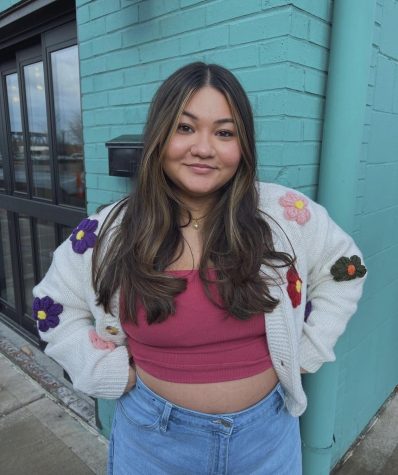The 21st century society ushered a culture that emphasizes the importance of women holding positions of power. Amid this change is an area that seemed to be made of impenetrable glass: religion.
Religious expectations of women have always been to assume docile roles, often placing them lower in the social hierarchy than their male counterparts. While other areas of society seem to be flourishing by giving women dominating roles, the progress made from a religious standpoint has been at a slower pace.
Regardless of the country or religion, women have been breaking the mold of traditional religious practices. “Religion has historically been used as a justification to oppress women, and the effects of this are still being seen today. Women unfortunately are still not allowed to play as large of a role in many religious organizations due to the men that wish to keep their power ” shares senior Parth Choudary.
In 1972, Sally Jane Priesand became the first woman ordained as a rabbi in the United States. During her teenage years, she was a committed member of Beth Israel-West Temple where her dedication to Judaism was fostered. She dared to dream of becoming a rabbi in a time where women weren’t supported for such ambitious endeavors. Fueled by her devotion, she enrolled at the University of Cincinnati in 1964 after an appeal held by the Hebrew Union College. Finally, the Jewish Institute of Religion allowed her to pursue rabbinical school.
Upon the completion of her education, she was faced with the vast, critical opinions held by the public in regards to her goals. However, Priesand did not let this deter her; she was on the road to making history. Her journey became heavily polarized by the media. An article containing ignorant content titled “Girl Sets Her Goal to be First Woman Rabbi” would set the trajectory for the progression of her career.
Priesand’s ordination did not secure her as a respected member of the rabbinical seminary despite her credentials. In her early years, many synagogues openly rejected her on the basis of her gender. Some synagogues even went as far as to claim her consideration for the job was more a formality than a fair opportunity. Many could not see past the traditional, subservient role they expected her to play.
After enduring several tribulations, she was offered a position at New York City’s Stephen Wise Free Synagogue, but her time there was short-lived upon discovering her inability to advance past the role of an assistant or associate. Resigning in a dignified manner, Priesand embarked on a journey to cement herself as a respected rabbi whose femininity was not seen as a shortcoming, but rather her greatest strength.
Fueled by her allegiance to her religion, Priesand secured a position working for Monmouth Reform Temple— a place that accepted what was seen as her “unemployable” trait. Through her role, she propelled her congregation to preach for social justice through Reform Movement’s Central Conference of American Rabbis’ Task Force on Women.
The hardest eight years of her life paved the road for women to garner momentum towards being granted equal treatment, ultimately making an impact.
In 2009, Sara Hurwitz was one of the first women to receive a private ordination as a leader—a tradition typically set for men. In that same year, she assembled an organization that ordains Orthodox Women Clergy going by the name of Yeshivat Maharat.
Across the globe, a monastery tucked into the city of Kathmandu, Nepal houses a group of Bhuddist disciples combatting the implications of a patriarchal religious landscape.
Due to cultural customs that revolve around favoring their male counterparts, nuns have been deprived of the ability to practice Buddhism with the same measures. Established in 500 BCE, the teachings of Siddartha Guatama were spread through Central and South Asia.
Centered around living a simplistic life, the ultimate goal of the religion was to reach nirvana, but the freedom of women to practice this religion was compromised as they were forbidden from activities involving physical exertion, leading prayers, singing and becoming chant masters. Instead, they were subject to tasks such as cooking and cleaning inside monasteries and temples.
Around thirty years ago, Jigme Pema Wangchen embarked on a journey to enact change. He was motivated by his vision for future generations of nuns to experience the most crucial components of the religion without any hindrances. With this seed of an idea, the “KungFu Nuns” were born, belonging to a 800 year old sect called Drupka (Dragon).
By setting out on a spiritual mission to achieve gender equality and physical fitness through practicing the ancient art of KungFu, these women are living up to having the same fierce characteristics as the mythical creature.
Inside the monastery, the sect’s nuns are training to be chant masters, a position typically only offered to men. Their efforts to make change expanded well outside the walls of the nunnery. In order to educate citizens in rural areas about the importance of gender equality and women, they travel by bike for 1,250 miles from the Himalayan range to Ladakh, India. “We are very proud to be women,” the nuns proclaimed pridefully.
The other purpose of this journey is to embody core principles of Buddhism, which promotes living a simple life and respecting the mother Earth. Along the bike path, they pick up trash and contribute to a cleaner environment.
They stand tall in the face of all adversity hoping to emphasize that their gender is a strength not a weakness.
Through depictions of goddesses like Kali Mata and Durga, Hinduism has traditionally always empowered women in the scriptures. This, however, does not translate to how women are treated culturally.
Marriage is one of the most celebrated aspects of Hinduism and contains divine customs like circling around the fire seven times to represent seven lifetimes together and the application of sindoor. Its other traditions such as kanyadan– the action of parents physically giving away their daughter to her husband and family as a final send off claiming she is theirs now–are steeped in misogyny.
In the present day, there are many couples who do not agree with this practice and seek out ways to have a ceremony that holds both men and women as equal partners. Acting as a beacon for change, a group of female priestesses has emerged known as the Shubhamastu in a mostly male-dominated field of priesthood.
Their purpose is to accommodate modern couples and to give the idea of marriage a more equivalent outlook. “I have just omitted those portions [of Hindu wedding liturgy] which are regressive to women. Like kanyadaan, the donation of the daughter to the husband and in-laws. “How can I keep that, when women of today are so enlightened? They are empowered! Most of them are working.”
They have also begun to perform prayer rituals such as those of the Durga Puja successfully fixing their status as respectable priestesses, gaining them national traction.
In the beginning, priestess Nandini faced many acts of disrespect such as officiating a wedding just to have the conservative relatives summon a male priest to perform the same ritual to validate it. “People naturally did not believe in us. They thought, ‘What will the women do?’” says Nadini.
Their hardships have paved the way for other women to pursue priesthood. She now hosts classes in downtown Calcutta for other women who want to follow in her footsteps. “After a few times practicing this, I got confident in myself,” says one of her students, 38-year-old Tina Halder, who comes from one of India’s oppressed castes. “We can change this and break the rules. It feels good.”
Little by little, women are fighting back against the shackles of patriarchy and assuming leadership roles to break boundaries and create room for many changes to come. While it goes without doubt that much progress is still left to be made, the feats achieved so far point to a brighter future with less discrimination towards women.










Dr. Kluane • Feb 4, 2025 at 10:20 am
I have the trademark for “Breaking the Stained Glass ceiling” and have used it for -30+ years.
Dr. Kluane Spake
mdyer • Feb 4, 2025 at 2:43 pm
Thank you for reading our article, Dr. Spake.